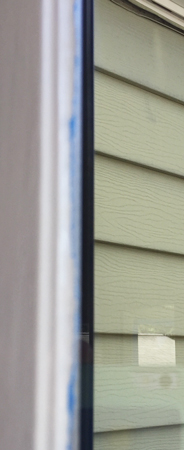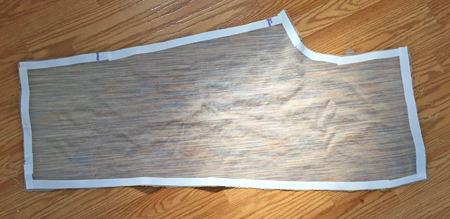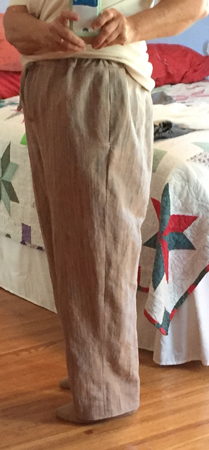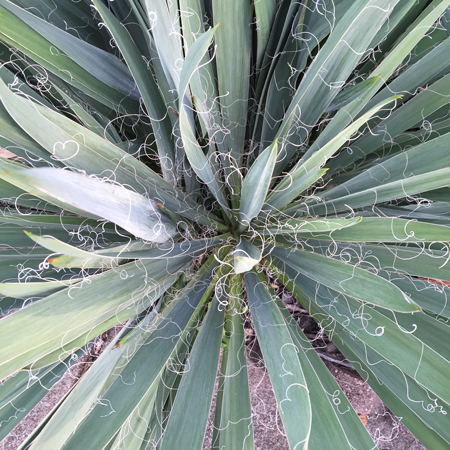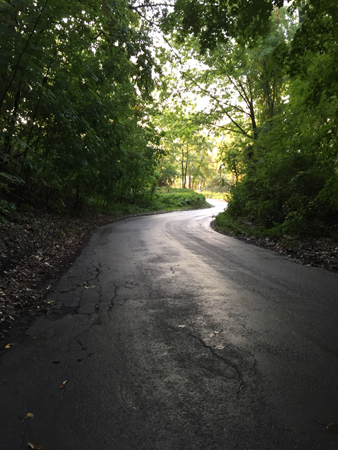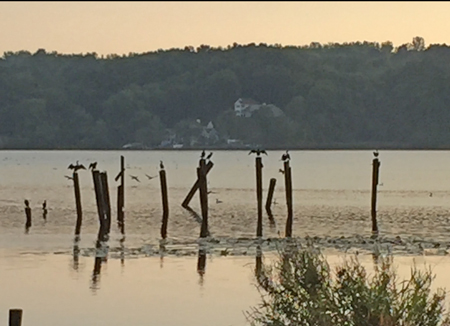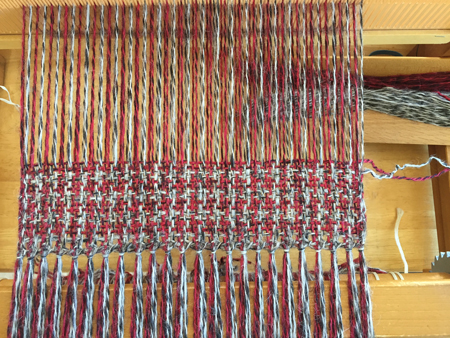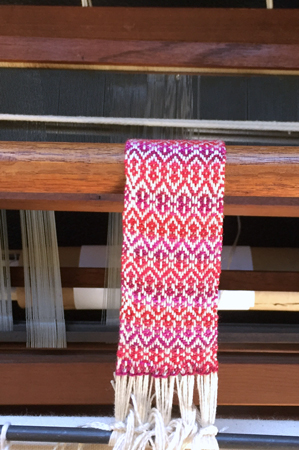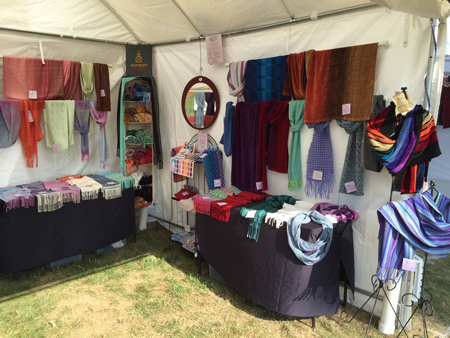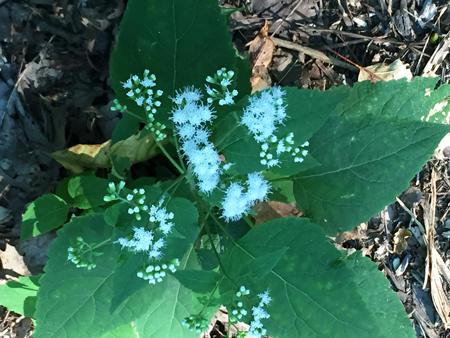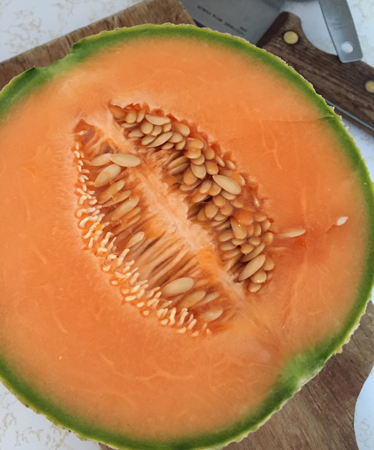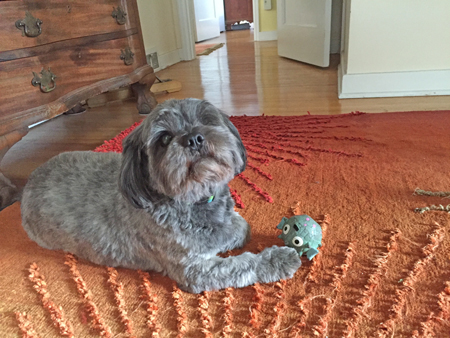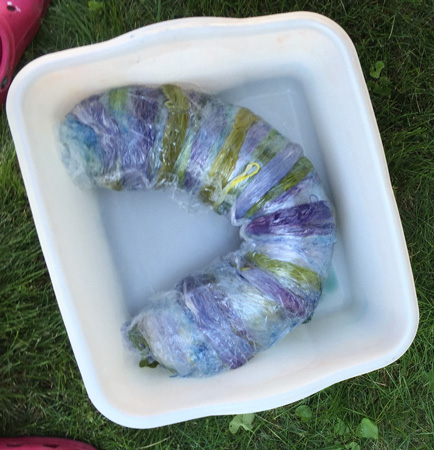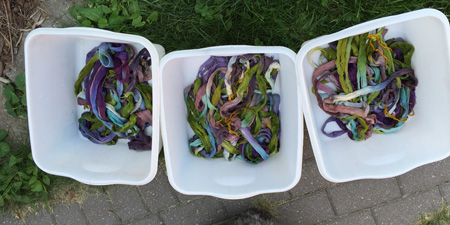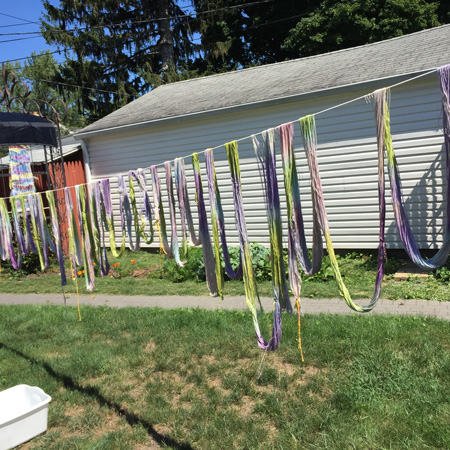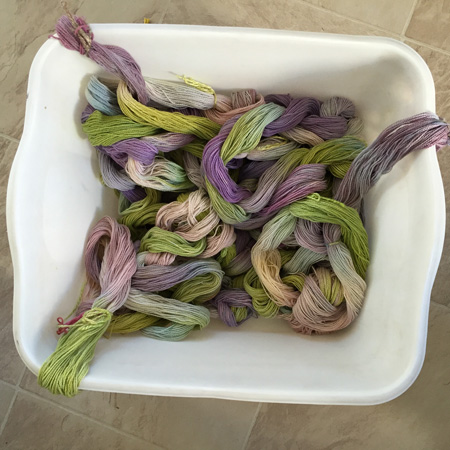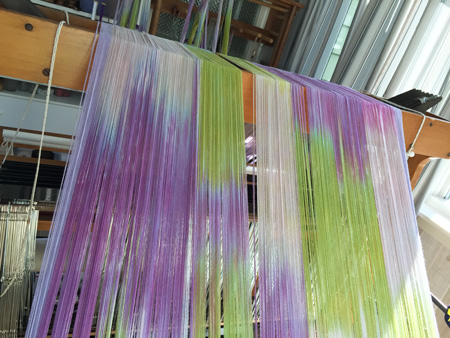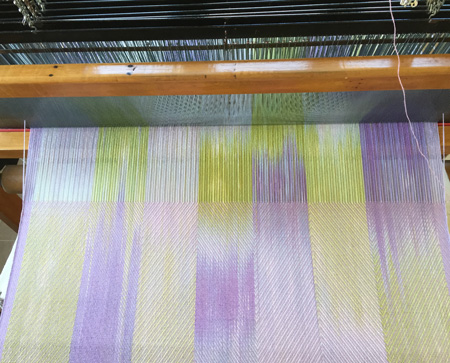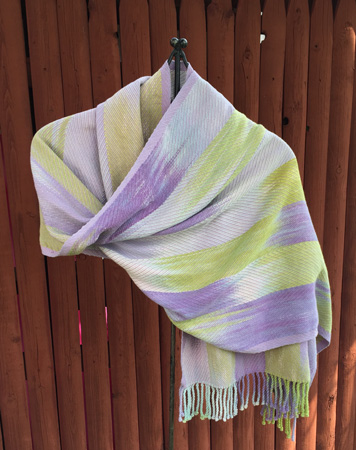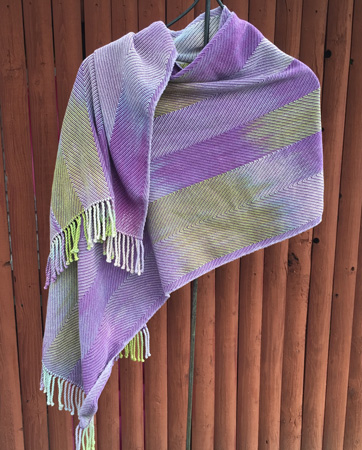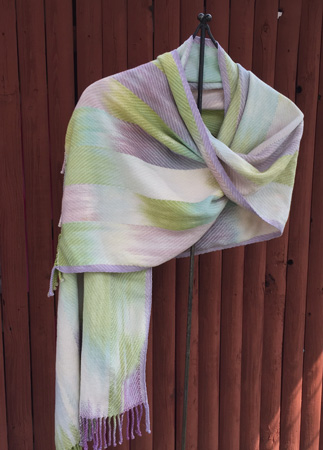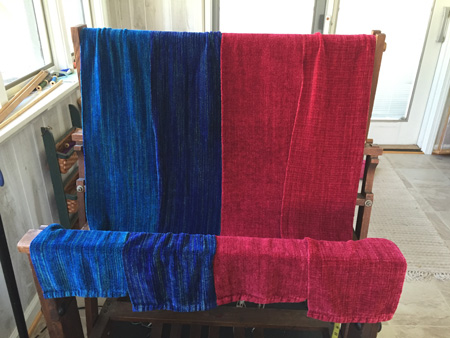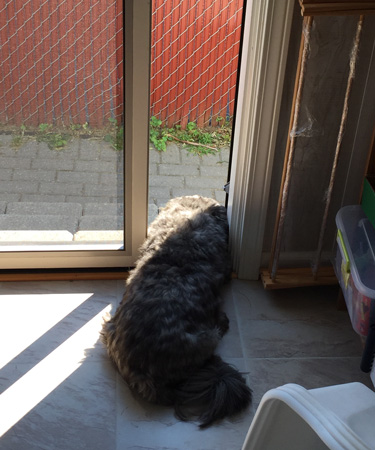The Buffalo Weavers’ Guild, of which I am an out-of-town member, has a regular program called FIFI – Find It, Finish It. A great concept.
Although I didn’t need to find these things, I did manage to finish a few things recently. First the unexciting but necessary.
Of those 12 casement windows in my weaving studio, several had issues. The frames had apparently been painted with the wrong type of paint, or painted at the wrong time of year, or not allowed to dry thoroughly before being closed, or something. When I opened those windows in the spring, paint remained on the inside of the frame, leaving the wood on the windows bare in spots. I did my research on the type of paint I should use, sanded the frames for the 5 worst windows, taped up the glass, and set to painting them. I used Snap Dry from Sherwin Williams. Pricey stuff! Sure glad I had a 30% off coupon. But what was I thinking when I bought a whole gallon?
Anyway, I put 3 coats of the paint on over the course of 2 dry days on the 5 frames, left the windows open for a few days of warm, dry weather, and then shut them a few days ago when the temps dropped dramatically. I’ve opened them a few times to see what’s going on, and so far, so good. The truth will be what happens in the spring after they’ve been shut and locked for months.
I do have to say that I was less than enthusiastic about the blue tape. As the directions said, I removed the tape as soon as I was done painting. I got a bunch of areas like this, where tape remnants had to be carefully removed with a razor blade. (Sorry for the fuzzy photo.)
The other 7 windows weren’t in bad shape, and I decided I’d see how those 5 were in the spring before I tackled the rest.
But here’s the finished AND exciting part. Look!
My pants are done! They are not perfect, and I’d make changes to the pattern for the next time, but I am reasonably happy with the pants.
Before I tell you about the process, I first want to send a HUGE thank you shout out to Theresa over at Runamuck Weaving. She’s an INCREDIBLY kind and helpful woman, and I sure hope that one day one of us will travel to the opposite coast so we can meet in person. Right now Theresa can use lots of our positive energy due to some difficult times she’s facing, so send her your kind thoughts.
Anyway, to start, I had to spend many evenings very carefully taking apart those horrid failed pants. Then I got myself some 830 Pellon to use for making my pattern from the pants I really like. Cut that pattern out of muslin, sewed them together, and the pants weren’t right. Thigh, waist, and crotch all too tight. Theresa offered her long-distance suggestions on how to improve the pattern.
I didn’t have enough muslin to move forward, so had to make another trip to the store. Then I revised the pattern and repeated the process. This time the crotch and thigh seemed right, but the waist was way too big. Back to Theresa, who offered advice on improvement.
Modify the pattern and the pants again. I have photos of those steps, but I’m not going to bore you with them. It seemed really close, and the reality is that every fabric works a bit differently, so I opted not to make another pair of muslin pants, but to move forward with my handwoven.
Theresa and a woman from my Guild who sews with her handwoven fabric both strongly recommended that I use the lightweight iron-on adhesive (Heat & Bond) on my seams and cut edges. (NOTE: In hindsight, I think I got the wrong stuff. I think I was supposed to use light iron-on interfacing, not adhesive. Oops!) I couldn’t find it in strips, so had to start by cutting long strips of the stuff, then ironing it on every edge of every piece. Time consuming, but not hard.
After this, however, apparently my brain left my body for a while. I pulled the paper (the white that you see) off the all the leg pieces of those pants before I started to pin them together and sew. It made quite a mess on the floor, so I crumpled it all up and put it in the recycle bin. BAD MOVE! The sewing machine would not move the fabric forward with the resistance of that iron-on stuff. I had to pull it out of the garbage and use a combination of that and tissue paper, pin it to every seam, and then commence sewing. I must say, pulling either the paper or the tissue off after sewing the seam was one more time consuming step, with varying degrees of difficulty. I am positive that I’ll have some paper bits in those pants for a long time. Much like the blue tape residue on my windows.
So I sewed. I had a few issues, one being that I couldn’t save the first waistband, and didn’t have enough fabric to cut a new one in one piece, so had to fart around a bit and design a new one in two pieces, with side seams. I was smart enough to not remove the paper liner from those pieces till after they were sewn! 🙂
Next, and I knew this would be a problem, when I cut those pants the first time I didn’t make them as long as I should have. Since I wanted long pants, not crops, I knew I’d have to make a tiny hem. I ended up deciding to fold once, very small, and press that adhesive together, then machine stitch. Never would have done this otherwise.
I also decided that with that iron-on adhesive, I would not also take the time to otherwise protect each raw edge with zigzag stitch. This may prove to be a real mistake, but I don’t think these pants will last forever regardless, and they don’t fit exactly like I want, so I’m okay with that.
I’m going to happily wear my new pants, sewn with my own handwoven cotton & linen fabric, when I do my demo at the Library on Saturday!


